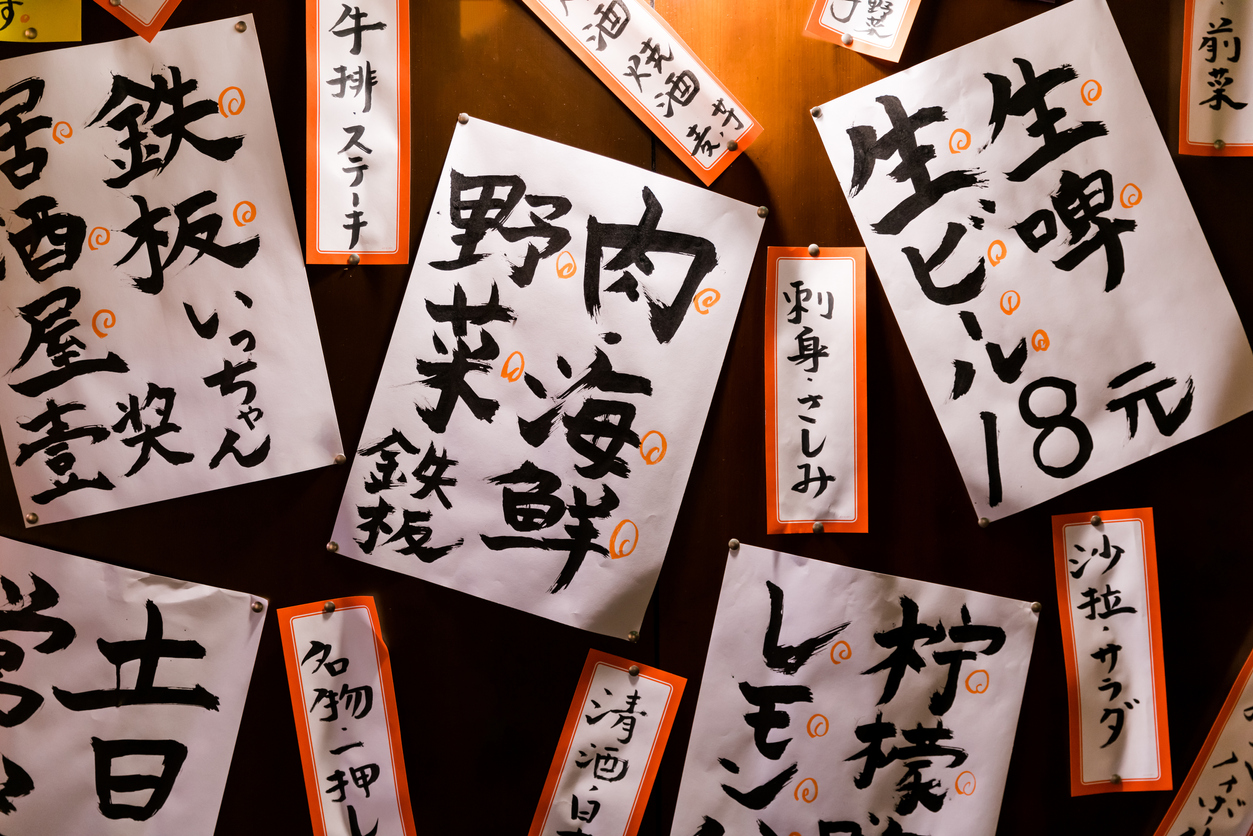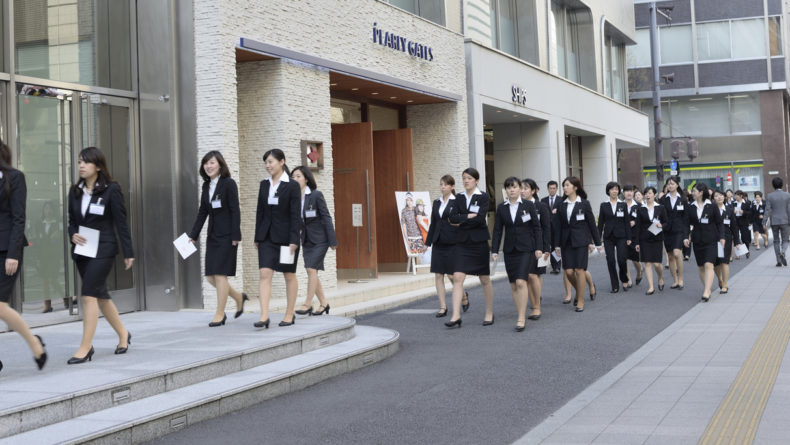Moving to Japan? Here are 10+ Tips to Help Women Prepare For Expat Life
A Comprehensive List Of Practical Advice For Wannabe Residents Who Identify As Female
Starting a new life in a foreign country is quite the undertaking. Here we provide guidance to make your transition smoother.
Congrats, you’ve done it—you purchased a one-way plane ticket to Japan! I remember the exhilaration of heading overseas to start a new chapter. Nothing compares.
It isn’t all sunshine and rainbows, however. Even with how prepared I was, one ordeal after another just kept arising. I had to Japanify my name (thus totally altering my identity), negotiate a cell phone contract in a foreign language, and take out a loan because I ran out of money before my first payday. In the hopes you’ll have an easier transition, here are 10 things to help you prepare for and settle into your new life in Japan.
1. Handle your visa situation beforehand
Unfortunately, you can’t just hop off a plane and swagger in, confetti falling. Anyone looking to study or work in Japan long term should secure a proper visa before they arrive.
How to become a resident of Japan
First, apply for a visa. To do so you’ll need:
- a valid passport (that won’t expire during your intended period of stay)
- a visa application form
- a recent photograph
- a Certificate of Eligibility (COE)
- various other documents depending on your situation
You’ll then take or send these documents to your nearest Japanese embassy or consulate and let them handle the rest.
Visa sponsorship is a case-by-case scenario, so make sure you investigate your options carefully. Check out the Immigration Bureau of Japan and the Ministry of Foreign Affairs of Japan websites for help. The two main types of long term permits are for employees and students.
Work visas
A work visa allows foreigners to live in Japan with the sponsorship of their employer (or a Japanese national). Working visas are normally granted for periods of 1 year or 3 years (with the option for renewal) to those with some kind of specialized skill—categories include artist, engineer, instructor, investor, and journalist.
This is a great time to make a living in Japan because the rules for acquiring a work visa were recently relaxed due to local labor shortages. Native English speakers are even more fortunate—jobs teaching the language are always available in abundance.
Working Holiday visas
Japan has working holiday arrangements with many nations, including Australia, Canada, Hong Kong, New Zealand, South Korea, and the UK. People between the ages of 18-25 (and up to 30 with special approval) can work part-time for one year.
Student visas
Student visas are available to anyone going to Japan to study. Generally, people do this by studying Japanese, attending a Japanese university full-time, or joining a study abroad program. Kyoto University has a helpful guide on how to apply for a Japanese university. Contact your local universities to see if they have a study abroad program in place.
Insider Tip: If you don’t want to teach English, there are other options. If you know Japanese, you can get a job as a translator or at a local company. Freelancers with multiple income streams can self-sponsor if they can provide proof of adequate income. Don’t assume you have to go down the English teaching route just because everyone else does.
2. Figure out your finances
Living in Japan is more affordable than people think. It’s not cheap, but if you plan ahead and budget accordingly, you’ll be ahead of the game.
Let’s break down the average monthly cost for a young, single woman living modestly in Tokyo, Japan’s most expensive city:
| Expense | Average Cost (¥) |
| Rent | 70,000 |
| Food | 30,000 |
| Utilities | 9,000 |
| Internet | 4,000 |
| Phone | 8,000 |
| Transportation | 4,000 |
| Personal Care (period products, birth control, cosmetics, etc.) | 10,000 |
| Other (shopping, going out, etc.) | 30,000 |
| Total Average Monthly Spending | 165,000 |
If that seems like a lot, breathe. Jobs tend to pay well enough to compensate, though it depends on your field and hours—English teachers working 30 hours a week typically earn 200,000+ a month, for example. Most companies reimburse the cost of commutes. Healthcare is cheap. There are plenty of ways to save. You’re gonna be fine!
The main hurdle is surviving the first couple of months—a time that marries a whole host of moving expenses (apartment deposits, new furniture costs, Internet setup…) to an excruciating period of waiting for your first paycheck. In other words, you’ll likely spend your first several weeks in Japan hemorrhaging money without making any.
To avoid going broke (and crazy with stress!) during this crucial period, I recommend bringing at least 400,000 yen with you to Japan to cover those initial costs. Convert all of it into cash—most places don’t take plastic.
Insider Tip: Want to set up your new digs on a budget? You can furnish your apartment by shopping at 100 yen shops, buying from “sayonara sales” groups on Facebook, and checking out your local used furniture and appliance stores. Nitori and Ikea are affordable local shops with online stores (and there’s always Amazon).
3. Do research about housing options and the livability of your area
Moving into a new place in Japan can be obscenely expensive. Housing contracts can require heavy investments upfront, so check your options ahead of time. You don’t want to be blindsided by a practice uncommon in your home country or a hidden fee you missed because the Japanese was too complicated.
If you’re on your own, enlisting help from a foreigner-friendly housing company may be best as these are less likely to involve obstacles like big deposits and guarantors. Real Estate Japan and GaijinPot Apartments are two such resources.
People moving to Japan generally have two options: an apartment or a share house.
Apartments
Known in Japan as マンション (“mansion”), apartments are the best option for city dwellers. They can be tiny, but are no smaller than the cramped closets typical of New York City—and generally more affordable! In Osaka, one of the biggest cities in the world, I lived in a 2-bedroom apartment that was a 10-minute walk from downtown for the equivalent of about $780 a month, plus utilities.
Share Houses
Share houses are a great way to save money and make friends since they come furnished and with roomies to split utilities with. That being said, your space and privacy are sacrificed, and because you are living with other people, say goodbye to the days where you could throw your clothes wherever you wanted—living in a share house requires the consideration of others.
Things to consider
As a lady, one very important factor to consider is safety. Japan is generally mind-bogglingly safe, but it’s always wise to err on the side of caution. If it makes you feel better to live in an apartment complex where residents enter a security code to enter, do it. If living in a co-ed share house feels awkward or unsafe, avoid it.
If you secure a job in advance, there’s a possibility that your company may provide housing. This removes much of the stress that comes with finding a place on your own, but it could also mean you get little say in where and how you live. If you have concerns about safety or comfort, let your employer know asap. Most will try to accommodate your needs.
Insider Tip: While apartment hunting, you may stumble across acronyms and attributes you’re not familiar with. For example, a 1LDK translates to a 1 bedroom apartment with a living room (L), dining room (D), and a kitchen (K). You may also have to choose between “tatami” (traditional Japanese floors) or “flooring” (synthetic wood floors).
4. Pack the right clothes for the climate and culture
Climate
Japan is spread across multiple diverse climates. Tropical Okinawa exists in a state of perpetual summer and snowy Hokkaido might as well be Russia. Cities like Kyoto and Osaka have distinct seasons with freezing temperatures throughout winter and scorching humidity all summer. Pack appropriately.
Culture
Clothing etiquette likely differs from your home country, especially at work. Even on your days off, revealing clothing isn’t always acceptable—don’t be surprised by the condescending remarks from old ladies who ask “Aren’t you cold?” if your shoulders are exposed. The Japanese tend to dress well in general—even busy mothers are always looking chic!—a fact that made this jeans and T-shirt loving American very self-conscious when arriving in the Land of the Rising Sun.
People who are above average in weight and/or height may have trouble finding clothing and shoes in Japan, so pack what you can! And when I say “above average” I mean by Japanese standards. If your feet or bust size are already considered large in your home country, you’re practically out of luck here.
Insider Tip: Pack shoes that easily slip on and off. The Japanese not only take off their shoes at home, but in restaurants, doctors’ offices, and public schools. Be prepared to remove your shoes at any time and always have a pair of socks handy, just in case (exposed feet are somewhat impolite).
5. Learn about health services and what to do in a medical emergency
It’s unlikely your tenure in Japan will be illness or ailment-free. Luckily, Japanese healthcare is affordable and reliable with clinics and hospitals more accessible than you’d think.
As accessible as it may be, it can’t hurt to learn the basics of the healthcare system and what to do in an emergency. Also, we should warn you that some hospitals actually close on the weekends. God forbid you injure yourself on a Sunday—if you do, call an ambulance!
Gynecology clinics are easy to find, yet the experience may be quite different from what you’re used to. That being said, doctors are generally honest and straightforward and take pains to make the experience as non-invasive as possible.

Birth control can be trickier. Female contraceptives, the morning after pill, and abortions are not covered by insurance and are expensive. Look into getting a birth control implant or an IUD before moving to avoid needing to get contraception in Japan. You may also be able to buy Plan B emergency contraception online or over-the-counter in your home country and bring it with you.
Mental health resources can be tough to find, especially when dealing with something debilitating like depression. TELL Japan and Japan Helpline offer English counseling over the phone.
Insider Tip: On prescription medication? Bring it to Japan with you! Prescriptions can be hard to find once you arrive. Also, drugstore pain, cold, and allergy medicines may not be as strong as what you’re used to, so consider packing plenty of those in your suitcase as well (just be sure to check your prescription is legal to bring into Japan).
6. Familiarize yourself with the Japanese language
You’re heading to a place where 99% of the population are native Japanese speakers. It’s an understatement to say even a basic understanding of Japanese will go a long way.
Japanese has three—yes, three!—alphabets called hiragana (ひらがな), katakana (カタカナ), and kanji (漢字). Familiarizing yourself with at least the first two alphabets will help you communicate.

Hiragana is Japanese’s most basic script. Children learn this alphabet first; so should you. Because it’s phonetic, you’ll learn Japanese pronunciation as well.
Katakana is also phonetic. It’s used to transcribe loan words from other languages, many of which come from English. At the very least this will help you read restaurant menus—“hamburger” is written ハンバーガー which is pronounced hanbaagaa. Close enough.
Kanji is derived from Chinese characters and are more complex in appearance. They represent concepts rather than sounds. While hiragana and katakana each have only 71 “letters”, there are thousands of different kanji (and combinations).
Insider Tip: Studying these in advance is best, but once you arrive you can really immerse yourself in the language. Take lessons (free classes are often available at city halls), join a language exchange, or—my personal fave—go out drinking with Japanese people. The booze will loosen your tongue and you’ll make friends along the way.
7. Take care of basic bureaucratic things as soon as you arrive
There are some dull but vital things you must do immediately after arriving.
First, you’ll need a residence card (在留カード; zairyū kaado). This is part of the process of going through immigration at the airport upon your arrival.
Second, you’ll have to make a trip to a place called a “ward office” (区役所; kuyakusho). It’s like a mini city hall, but it represents the specific ward you live in. You’re probably familiar with these—some of Tokyo’s wards include Shinjuku, Shibuya, and Harajuku. For areas that aren’t divided up by wards, you’ll go to the shiyakusho (市役所) which is a standard city hall.
Head to your local ward office to register your address (don’t forget your residence card!). This must be done within 14 days of arrival in Japan.
At the ward office, you can also sign up for health insurance if your employer doesn’t cover it. Additionally, you can register for your “My Number,” an identification service similar to America’s social security numbers.
Insider Tip: Ward offices may not have English speaking staff. If that makes you uncomfortable, see if your employer, a coworker, or a friend will accompany you.
8. Use public transit without getting lost…or worse, groped

Ah yes, Japan’s fabled public transit—the real reason people move here (or is that just me?!). It’s clean, fast, punctual, sleek, sexy, and… well, you get the idea.
Railways are, of course, the highlight. Trains, subways, and trams provide regular service and arrive exactly on time—down to the millisecond (okay, bit of an exaggeration). There are many different kinds of trains and railway companies, and figuring it all out may be overwhelming at first, but you get the hang of it pretty quickly. Google Maps displays transit information, but nothing beats Hyperdia for all your commute planning needs.
You may have heard there is a groping problem on Japan’s trains. This is true.
You may have heard there is a groping problem on Japan’s trains. This is true. Sadly, young Japanese girls are disproportionately affected. However, if you ever feel unsafe or uncomfortable, women-only train cars are available on most lines.
Buses and taxis are also great ways to get around. Ride-share services like Uber aren’t very popular.
Insider Tip: Public transit is amazing, but only if you live in a city. If you’re moving to a rural area—a common situation especially for JETs—you’ll likely need a car (your employer may provide one), though other means of transit, such as highway buses, may be available. Municipal buses in rural areas typically run infrequently and stop service early in the day, so check the schedules carefully so you don’t get stranded!
9. Brace yourself for natural disasters
Earthquakes
Yes, Japan is pristine and has a low crime rate, but did you know it’s also the most seismically active nation on Earth?! Most quakes are so small they aren’t even discernible, but big ones do happen. Here are some tips to help you prepare, just in case.
- Make an emergency bag (earthquakes can occur any time with zero warning, even the day after you arrive).
- Put it in a location where it’s easy to grab if you’re running out in a hurry.
- Read up on what to do during and after a quake.
- Earthquake-proof your apartment by securing your tall furniture and not putting heavy, breakable things on high ledges.
- Find your local evacuation routes and centers.
- If you live in a coastal area, don’t wait for a tsunami warning—get to high ground immediately. These areas should have signs pointing to elevated areas.
Typhoons
Japan is also susceptible to typhoons (or “hurricanes” where I’m from). Southern, coastal areas are most at risk, and chances are you won’t see a tsunami in a land-locked area, but it’s good to be aware of what to do during one no matter where in Japan you’re headed.
- Pay attention to emergency alerts (on television, the radio, or online).
- Stay away from windows and bring any outdoor plants or furniture inside.
- In case of flooding, fill up some containers with drinkable water, move your valuables up high, disconnect appliances and electronics, and evacuate if needed.
Insider Tip: Just because Japan is infamously disaster prone doesn’t mean you should cancel your plane ticket; the nation is also home to some of the most sophisticated disaster resistant technology in the world. A pioneering earthquake warning system saves lives by providing extra seconds to take cover. Most buildings are equipped with shock absorbers and other technology that further reduce harm. The people are incredibly resilient and continuously adapt, making Japan actually one of the safest places to be if an earthquake or other disaster strikes.
10. Throw everything you know out a window
While everyday Japan probably isn’t as unusual as the most sensational articles want you to believe (I never did find one of those used underwear vending machines), it will differ from what you’re used to.
Though we can provide some advice and resources to help, we can’t possibly cover every unexpected scenario you’ll encounter. Culture shock aside, there was so much I wasn’t ready for even after my own extensive research.
Japan may not be what you expect it to be—it may exceed or totally subvert your expectations—and that’s okay. Be ready for anything and you’ll have a lot more fun!
Japan may not be what you expect it to be—it may exceed or totally subvert your expectations—and that’s okay. Be ready for anything and you’ll have a lot more fun!
Insider Tip: The most challenging obstacles were the ones I did not foresee. Public restrooms rarely have paper towels or dryers (always carry a small towel unless you don’t mind wet hands). The variety of foods you’re accustomed to may not be available (sites like iHerb, The Flying Pig, and The Meat Guy are godsends). ATMs close!! These inconveniences are best viewed as exciting insights into an unfamiliar culture rather than frustrating hurdles.
















Leave a Reply